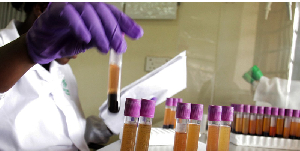Business News of Wednesday, 11 May 2016
Source: classfmonline.com
Greater Accra, Ashanti bear brunt of economic hardship – GSS
A report released by the Ghana Statistical Service (GSS) indicates that Ghanaians living in the Greater Accra and Ashanti Regions are bearing the brunt of economic hardships.
The report said people living in the other eight regions may be enjoying a stable economy as per the statistics released by the GSS.
The report released by the Deputy Government Statistician, Baah Wadieh, revealed that the Greater Accra Region recorded the highest year-on-year inflation rate of 22 per cent, followed by the Ashanti Region with 20.3 per cent, an indication that the cost of doing business in these regions was very high during the month under review, April.
The Upper East Region recorded the lowest, 13.9 per cent, among the regional differentials. The rates for the other regions as announced by the GSS include 15.4 per cent for the Central Region; Eastern, 17.1 per cent; Western, 16.4 per cent; Volta, 16 per cent; Brong Ahafo, 18.5 per cent; Northern, 17.8 per cent; and Upper West, 16.8 per cent.
The report stated that in the Greater Accra Region, housing, water, electricity, gas, and other fuels recorded 47.8 per cent, whereas transport, recreation & culture, and education scored 40.8 per cent, 33.1 per cent, and 30.3 per cent, respectively.
The other factors include clothing and footwear, 22.1 per cent; furnishings, household equipment and routine maintenance, 20.1 per cent; miscellaneous goods and services, 14.6 per cent; alcoholic beverages, tobacco, and narcotics 14.5 per cent; communications, 13.7 per cent; health, 12.7 per cent; hotels, cafes, and restaurants, 12.3 per cent.
For the Ashanti region, the food group demonstrated the hardships they faced during the month of April. Vegetables recorded 13.3 per cent; oil and fats, 12.5 per cent; mineral water and soft drinks, fruits and vegetable juices, 12.3 per cent; fruits, 12.1 per cent; non-alcoholic beverages, 11.4 per cent; coffee, tea and cocoa, 10 per cent; sugar, jam, honey and chocolate and confectionery, 9.2 per cent; food products, 9.1 per cent; meat and meat products, 8.6 per cent; milk, cheese and eggs, 7.9 per cent; cereals and cereal products, 6.3 per cent.











